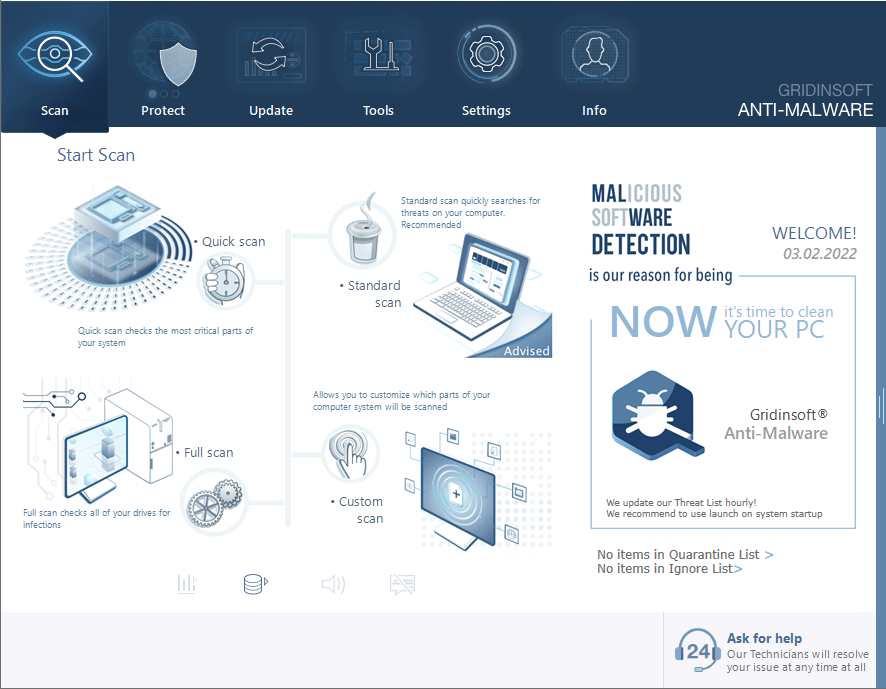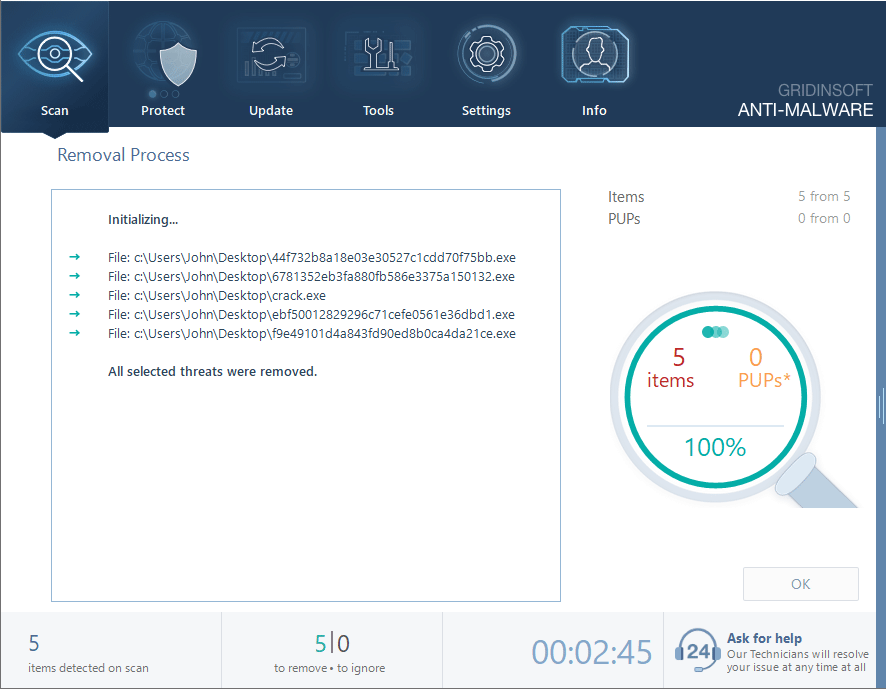Trojan:Win32/SmokeLoader is a sophisticated backdoor malware that has remained active in the threat landscape since 2011. It primarily functions as a downloader, delivering additional malicious payloads to infected systems while providing attackers with unauthorized remote access. This comprehensive guide examines SmokeLoader’s technical operations, infection vectors, and provides detailed removal instructions to secure your system.

What is Trojan:Win32/SmokeLoader?
Trojan:Win32/SmokeLoader, also known as SmokeLoader or Dofoil, is a persistent malware threat first documented in 2011. Its primary function is to provide attackers with unauthorized backdoor access to compromised systems. Unlike simpler malware, SmokeLoader acts as a versatile delivery platform for multiple malicious payloads, including:
- Information-stealing malware (infostealers)
- Banking trojans targeting financial credentials
- Ransomware that encrypts user files for extortion
- Cryptocurrency miners that exploit system resources
- Point-of-sale (PoS) malware targeting retail payment systems
- Additional backdoors for persistent access
SmokeLoader’s persistence in the threat landscape stems from its sophisticated evasion techniques and continuous evolution. Researchers have observed significant updates to its code as recently as Q1 2024, incorporating increasingly advanced anti-analysis measures that help it avoid detection by security solutions. This ability to adapt has kept SmokeLoader relevant in the cybercriminal ecosystem despite being over a decade old.
Source: Data compiled from multiple threat intelligence reports, 2023-2024
Technical Analysis of SmokeLoader
SmokeLoader’s operational cycle follows a sophisticated multi-stage process designed to establish persistence, evade detection, and facilitate the delivery of additional malware. Each phase demonstrates the trojan’s technical complexity and adaptability.
| Capability | Implementation | Impact |
|---|---|---|
| Process Injection | PROPagate code injection, SetWindowsSubclass API abuse | Executes malicious code within legitimate processes |
| Anti-Analysis | VM/sandbox detection, debugger checks, sleep timers | Evades automated security analysis systems |
| Persistence | Registry modifications, scheduled tasks, DLL hijacking | Survives system reboots and basic removal attempts |
| C2 Communication | Legitimate domain abuse, HTTP 404 response data parsing | Disguises command traffic as normal web browsing |
| Payload Delivery | Multi-stage downloader, encrypted payloads | Installs various additional malware with different functions |
Infection Vector Analysis
SmokeLoader typically enters systems through carefully crafted phishing email campaigns. These emails often contain malicious attachments disguised as legitimate documents (PDF, DOC, XLS) that execute the initial infection when opened. Security research shows a recent trend toward corrupted Word documents that appear damaged, prompting users to enable macros for “proper viewing.”
The malware can also spread through exploit kits deployed on compromised websites, automatically exploiting browser vulnerabilities to download and execute SmokeLoader without requiring user interaction. This “drive-by download” technique is particularly effective against systems with outdated browsers or plugins.
Additionally, SmokeLoader has been observed bundled with seemingly legitimate software, particularly in “cracked” applications distributed through unofficial channels. This distribution method targets users seeking free versions of commercial software, who unwittingly install the trojan alongside the desired program.

Execution and Persistence Mechanisms
Once executed, SmokeLoader employs sophisticated code injection techniques to establish persistence and avoid detection. A key method in its arsenal is the PROPagate injection technique, which exploits the Windows SetWindowsSubclass API function to inject malicious code into legitimate processes such as explorer.exe, svchost.exe, or browser executables.
This approach gives the malware elevated privileges by operating under the security context of the host process. SmokeLoader can then install persistence mechanisms to ensure it survives system reboots, including:
- Creating scheduled tasks that execute at regular intervals or system startup
- Modifying registry keys in HKCU\Software\Microsoft\Windows\CurrentVersion\Run
- Implementing DLL hijacking against legitimate applications
- Establishing WMI event subscriptions for persistent execution
Recent variants use dynamic API resolution to avoid direct imports of suspicious Windows API calls, making static analysis more challenging for security researchers. The malware also employs multiple layers of encryption and obfuscation to conceal its code, only decrypting specific components when needed for execution.
Command and Control Infrastructure
SmokeLoader’s command and control (C2) communication demonstrates significant sophistication in its attempt to blend with legitimate network traffic. The malware establishes connections to remote C2 servers that issue commands and provide additional payloads for download.
A particularly clever evasion technique employed by SmokeLoader involves the abuse of legitimate domains (such as microsoft.com, bing.com, adobe.com) as part of its C2 infrastructure. The malware sends requests to these domains that intentionally trigger HTTP 404 (Not Found) errors but contain encrypted command data in the response body. This approach effectively camouflages malicious traffic as normal web browsing, making it extremely difficult for network monitoring solutions to identify the communication as suspicious.
Advanced versions of SmokeLoader incorporate a domain generation algorithm (DGA) that creates pseudo-random domain names for C2 communication. This technique allows the malware to cycle through different domains if primary C2 servers are blocked or taken down, significantly increasing its resilience against network-based defenses.
Payload Delivery and Secondary Infections
The primary function of SmokeLoader is to serve as a delivery vehicle for additional malware. After establishing persistence and C2 communication, it downloads and executes various secondary payloads according to the attacker’s objectives. These payloads typically include:
- Information stealers: Malware designed to harvest credentials from browsers, email clients, cryptocurrency wallets, and other applications. Common examples include Vidar, Raccoon, and FormBook.
- Banking trojans: Specialized malware that targets financial institutions to steal banking credentials and facilitate fraudulent transactions.
- Ransomware: Encrypts files on the victim’s system and demands payment for decryption.
- Cryptominers: Utilize the victim’s computing resources to mine cryptocurrency for the attacker’s benefit.
- Remote Access Trojans (RATs): Provide comprehensive control over the infected system, allowing attackers to access files, capture keystrokes, activate webcams, and more.
SmokeLoader can execute these payloads using various techniques to avoid detection, including process hollowing, where it creates a legitimate process in a suspended state and replaces its memory with malicious code before resumption.
Detection Techniques and Evasion Mechanisms
SmokeLoader employs a sophisticated arsenal of evasion techniques designed to circumvent both automated security solutions and manual analysis attempts. Understanding these mechanisms is crucial for effective detection and removal.
Anti-Analysis Techniques
To evade detection and analysis, SmokeLoader implements multiple anti-analysis features:
- Virtual Machine Detection: The malware checks for artifacts indicating it’s running in a virtual environment (such as VMware or VirtualBox), common in security analysis setups. This includes examining registry keys, processes, MAC addresses, and hardware IDs.
- Anti-Debugging Measures: SmokeLoader employs techniques to detect and evade debuggers, including time-based checks and manipulation of the PEB (Process Environment Block) to identify debugging flags.
- Sleep Timers and Delayed Execution: The malware often incorporates significant time delays between infection and malicious activity, outlasting the typical observation window of automated analysis systems.
- Code Obfuscation: SmokeLoader’s code is heavily obfuscated, with encrypting/decrypting routines that only reveal the actual code at runtime, making static analysis challenging.
These techniques make SmokeLoader particularly difficult to analyze through conventional automated security tools, contributing to its longevity in the threat landscape despite significant security industry attention.
Identifying SmokeLoader Infections
While SmokeLoader is designed to operate stealthily, several indicators may suggest a system infection:
- Unexplained system slowdowns or performance issues
- Unusual network activity, particularly to uncommon domains or IP addresses
- Security software or Windows Defender being disabled without user action
- Browser redirects or unexpected pop-up advertisements
- Increased CPU usage, especially when the system should be idle
- Suspicious processes in Task Manager, particularly those with random names or running from unusual locations
Advanced users can check for suspicious registry entries in common persistence locations or examine network traffic for unusual patterns, though SmokeLoader’s sophistication means these indicators may be subtle and difficult to identify without specialized tools.
How To Remove Trojan:Win32/SmokeLoader
Removing SmokeLoader requires a systematic approach due to its sophisticated persistence mechanisms and anti-removal techniques. The malware’s ability to inject into legitimate processes and establish multiple persistence points makes complete removal challenging without specialized tools.
Automatic Removal with GridinSoft Anti-Malware
The most effective and reliable method for removing SmokeLoader is to use specialized anti-malware software designed to detect and eliminate sophisticated threats. GridinSoft Anti-Malware is specifically engineered to identify and remove complex malware like SmokeLoader, including its hidden components and persistence mechanisms.

Download and install Anti-Malware by clicking the button below. After the installation, run a Full scan: this will check all the volumes present in the system, including hidden folders and system files. Scanning will take around 15 minutes.
After the scan, you will see the list of detected malicious and unwanted elements. It is possible to adjust the actions that the antimalware program does to each element: click "Advanced mode" and see the options in the drop-down menus. You can also see extended information about each detection - malware type, effects and potential source of infection.

Click "Clean Now" to start the removal process. Important: removal process may take several minutes when there are a lot of detections. Do not interrupt this process, and you will get your system as clean as new.

Manual Removal Approach (For Advanced Users)
If you prefer to attempt manual removal, be aware that this approach requires technical expertise and carries risks due to SmokeLoader’s complexity. The following steps should be performed in Windows Safe Mode with Networking:
- Enter Safe Mode with Networking: Restart your computer and press F8 during startup (before Windows loads) to access the boot options menu. Select “Safe Mode with Networking.”
- Identify malicious processes: Open Task Manager (Ctrl+Shift+Esc) and look for unfamiliar processes, particularly those with random names or running from unusual locations.
- Check startup items: Run MSConfig (type msconfig in the Run dialog) and examine the Startup tab for suspicious entries.
- Remove malicious registry entries: Use Registry Editor (regedit) to check and remove suspicious entries in:
- HKEY_CURRENT_USER\Software\Microsoft\Windows\CurrentVersion\Run
- HKEY_LOCAL_MACHINE\SOFTWARE\Microsoft\Windows\CurrentVersion\Run
- HKEY_CURRENT_USER\Software\Microsoft\Windows\CurrentVersion\RunOnce
- HKEY_LOCAL_MACHINE\SOFTWARE\Microsoft\Windows\CurrentVersion\RunOnce
- Check scheduled tasks: Open Task Scheduler and look for recently created tasks with suspicious descriptions or actions.
- Scan for hidden files: Check common malware locations including:
- C:\Windows\Temp
- C:\Users\[username]\AppData\Local\Temp
- C:\Users\[username]\AppData\Roaming
- Reset browser settings: Reset your browsers to default settings to remove any malicious extensions or configurations.
Due to SmokeLoader’s complexity and its ability to establish deep persistence, manual removal may not be completely effective. If symptoms persist after manual removal attempts, we strongly recommend using specialized anti-malware software for thorough elimination.
Prevention and Protection Measures
Preventing SmokeLoader and similar malware infections requires a multi-layered approach to security. Implementing the following measures can significantly reduce your risk of infection:
- Keep systems and software updated: Regularly apply security updates for your operating system and applications to patch vulnerabilities that could be exploited.
- Exercise email caution: Be skeptical of unexpected email attachments, even from seemingly legitimate sources. Verify the sender’s identity before opening attachments or clicking links.
- Use legitimate software sources: Download software only from official websites or authorized distributors. Avoid “cracked” or pirated software, which commonly serves as a vector for malware distribution.
- Implement robust endpoint protection: Utilize comprehensive security solutions that include real-time protection, behavioral analysis, and exploit prevention capabilities.
- Enable enhanced browser security: Configure browsers to block potentially malicious content and disable automatic execution of scripts and active content.
- Practice regular backups: Maintain regular, secure backups of important data to minimize the impact of potential infections.
- Implement network monitoring: For organizations, deploy network monitoring solutions capable of detecting suspicious traffic patterns associated with command and control communications.
These preventive measures, combined with security awareness and caution when interacting with digital content, provide a strong defense against SmokeLoader and similar threats.
Frequently Asked Questions
What damage can Trojan:Win32/SmokeLoader cause to my computer?
SmokeLoader can cause extensive damage to your system by downloading and installing additional malware, including ransomware that encrypts your files, infostealers that extract sensitive information like passwords and financial data, and cryptominers that exploit your system resources. It can also provide remote access to attackers, allowing them to control your computer, access your files, monitor your activities, and potentially spread to other devices on your network.
How can I tell if my computer is infected with SmokeLoader?
Signs of SmokeLoader infection include unexplained system slowdowns, unusual network activity even when you’re not using the internet, security software being disabled without your action, browser redirects, increased CPU usage during idle periods, and unexpected system crashes. You might also notice unfamiliar processes in Task Manager, particularly those with random names or running from non-standard locations. However, since SmokeLoader is designed to operate stealthily, the most reliable detection method is to run a comprehensive scan with specialized anti-malware software.
Why doesn’t Windows Defender detect SmokeLoader in all cases?
Windows Defender may miss SmokeLoader infections because the malware employs sophisticated evasion techniques, including code obfuscation, process injection into legitimate Windows processes, anti-analysis mechanisms that detect security environments, and frequent code updates that stay ahead of signature-based detection. SmokeLoader’s ability to modify system security settings can also disable or bypass Windows Defender entirely, preventing detection even if the signatures are updated.
Can SmokeLoader steal my passwords and banking information?
Yes, SmokeLoader itself doesn’t typically steal credentials directly, but it serves as a delivery mechanism for infostealers specifically designed for this purpose. After infection, SmokeLoader commonly downloads and installs specialized information-stealing malware like Vidar, Raccoon, or FormBook, which systematically extract saved passwords from browsers, banking applications, cryptocurrency wallets, and email clients. This data is then transmitted to the attackers’ servers, potentially leading to identity theft and financial fraud.
How can I protect myself from SmokeLoader infections?
Protect yourself from SmokeLoader by keeping your operating system and all software updated with security patches, being cautious with email attachments and links even from seemingly legitimate sources, downloading software only from official websites, using comprehensive security solutions with real-time protection, configuring browsers to block potentially malicious content, implementing strong email filtering, and avoiding pirated software. Regular system backups are also essential to minimize data loss if an infection does occur.





